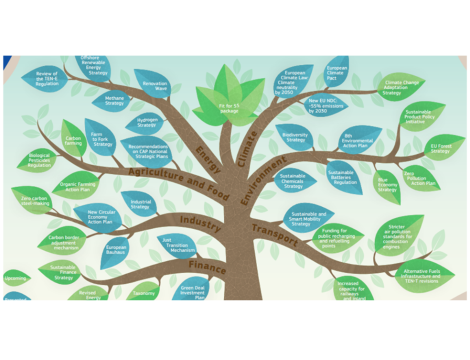
Food & Agri

04 june 2024
Other blog
Unfolding CSRD This article is part of a series of short blogs by the Food & Agri team at Anders Invest. This article is specifically written for individuals and companies that are interested in or affected by CSRD. In total, 50,000 companies will need to comply with this legislation in the coming years. Additionally, companies who do not need to report will face additional pressure to supply information and data regarding their sustainability performance from B2B customers. Are you involved with a company that will need to comply with the CSRD or needs to generate impact data? Then this article is meant for you. Let’s unfold it’s basic concepts together. The Corporate Sustainability Reporting Directive (CSRD) is a piece of legislation developed by the European Union which passed on January 2023. Starting January 1, 2024, CSRD intends to ensure that large and listed companies will report and disclose sustainability information in an elaborate and consitent framework in their management reports. It builds upon previous legislation through: an extended scope including a gradual integration of large companies, standardized requirements, assurance requirements, a digital format, and integration into management reports. Given the extensive scale of the directive, it is very likely that most companies are affected by this directive (either directly or indirectly). Let’s put together some basic concepts in this article to unfold CSRD and understand it’s mechanisms. Why did CSRD came into effect? CSRD aims to address climate change, stakeholer salience and governance malpractises. The driving force behind the CSRD is the European Union's ambitious goal, as outlined in the European Green Deal, to become the first climate-neutral continent and achieve a pollution-free environment by 2050. The Green Deal is the overall sustainable growth strategy of the EU. To direct capital to investments that drive sustainable solutions, the EU made an Action Plan on Financing Sustainable Growth (APFSG) which consists of a set of policy initiatives. To prevent greenwashing and set aligned activities for sustainable investments, the EU taxonomy regulatory framework came into effect in 2020. Basically, CSRD is required to increase transparancy through disclosure of sustainability information, enabling EU taxonomy to work. Overall, CSRD’s goal is not to report for the sake of reporting, but for the sake of transitioning to a green economy with the relevant public information to do so. However, it is difficult to asses how much of the effort will be translated to actual impact. How will CSRD impact the business climate of Europe? Starting in 2025, the first companies need to report on their ESG impacts and opportunities over the year 2024. CSRD compliance is phased in, depending on the type of company. The first report year for the application of the new regulations will be structured as follows: In 2025, companies already subject to the previous non-financial reporting standards, particularly large public-interest entities with more than 500 employees. The subsequent year, 2026, marks the inclusion of other large companies, specifically those with over 250 employees. By 2027, the reporting requirements will extend to include listed Small and Medium-Sized Enterprises (SMEs). Finally, in 2029, non-EU companies generating more than €150 million in revenue within the EU will also be required to comply with these reporting standards. Gradually, more than 50.000 companies will need to report a maximum of 11.000 datapoints per year. The European Reporting Advisory Group (who prepared the standard) estimates that the one-off costs are around €287.000 and recurring cost are €319.000 for companies the first companies to start in 2025. For later companies the costs are €146.000 (one-off) and €162.000 (recurring). As you can see, the amount of work and costs involved with the mere compliance, let alone impact, are significant. Next up, what is in the actual report? What will be in the report? Before CSRD, the annual report consisted of a management report, followed by an audit report and financial statements. The sustainability statements are based on the European Sustainability Reporting Standards (ESRS) and consist of General Information (ESRS-1), General Disclosures (2), Environmental information (ESRS-E), Social Information (ESRS-S), Governance Information (ESRS-G). Thus, CSRD is the piece of legislation as directed by the EU, ESRS are the standards that specify what to report. List of topical standards: ESRS E1 Climate change ESRS E2 Pollution ESRS E3 Water and Marine Resources ESRS E4 Biodiversity and Ecosystems ESRS E5 resource use and circular economy ESRS S1 Own Workforce ESRS S2 Workers in the value chain ESRS S3 Affected communities ESRS S4 Consumers and end-users ESRS G1 Business Conduct ESRS 1 and 2 serve as a guideline for the general sustainability reporting. The cross-cutting standards define the information to be disclosed about material impacts, risks and opportunities related to sustainability aspects. An understanding of the structure, concepts and general requirements for the preparation and presentation of sustainability information is to be reported. For the topical standards, one is required to conduct a double materiality assesment to map impact, risks and opportunities in relation to the different topics. All topics that are material in the value chain of the company have to be reported and substantiated with data. Accordingly, all topics whose impacts are either materially related to the environment or society (impact materiality, inside-out) or which have a short-, medium- or long-term financial impact on the company and can thus significantly influence the company's development and performance (financial materiality, outside-in) have to be reported. Once all material points are covered, the report will be auditted by an external assurance party. As you may see, it will prove difficult to operationalise this directive and the amount of abbreviations by itself is a real headache. In the next article, we will go in more detail on the impact on the business landscape for Food & Agri and what our strategy involving CSRD is.

02 may 2024